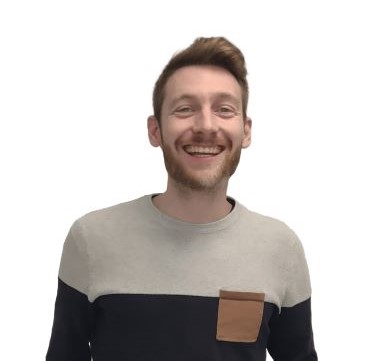WHO ARE WE ?
C2Care, is, above all, the story of a strong friendship between its two co-founders, Romain Streichemberger and Pierre Gadea. Their deep desire to make a meaningful impact, combined with their encounter with a doctor specializing in virtual reality-based phobia treatment, led them to leverage their expertise to enhance existing solutions and help people.
Over the past ten years, C2Care has continuously innovated and pushed the boundaries of immersive therapies. Today, in the era of artificial intelligence, the story continues to unfold with the same ambition: to revolutionize psychological support and guide each individual toward lasting well-being.

Justine Fontaine
Administrative assistant
+33 4 83 57 51 56

Cédric Stoclet
Commercial service
+33 6 58 65 03 53

Arnaud Eloi
Technical service
+33 4 83 57 51 57
Receive the C2Care method for free, combining Artificial Intelligence and Virtual Reality !
OUR SERVICES
We develop an application based on exposure therapy, designed in collaboration with university medical teams and healthcare professionals. Within a single platform, we have integrated over a hundred immersive environments, enhanced with artificial intelligence to provide highly realistic social interactions.
OUR MISSION
Our goal is to offer each individual the opportunity to break free from psychological barriers by providing a range of innovative solutions tailored to their specific needs.
We simplify the management of individuals facing mental health challenges, mild to severe cognitive disorders, or loss of autonomy by developing solutions adapted for healthcare professionals working in private practice, medical institutions, or teleconsultation settings.
OUR VALUES
Innovation
We push the boundaries of new technologies to deliver ever more effective solutions.
Accessibility
We believe that mental well-being is essential to quality of life, and we are committed to making it accessible to everyone.
Proximity
We stay attuned to the needs and feedback of our clients to provide an application and service that best meet their expectations.
Romain STREICHEMBERGER
PrEsident, C2Care
A computer engineer by training, Romain Streichemberger is committed to leveraging his technical expertise and passion for innovation to advance mental health. After gaining entrepreneurial experience in the video game industry, he embarked on the C2Care adventure in 2015. The team quickly grew, and the company established itself as a key player in the development of software solutions for mental well-being.
We are dedicated to developing solutions that facilitate access to mental well-being and enhance the quality of care for every individual.
"We are convinced that everyone's well-being depends above all on access to quality care."









How to find us ?
OUR OFFICES
Ilôt Les Picôtières
101 Avenue Desmazures
83110, Sanary-Sur-Mer
9 a.m. to 6 p.m. Monday to Friday
+ 33 (0)4 83 57 51 58
Do you need further information or have any specific questions ?
FAQ
Why use virtual reality in the field of mental health?
- Gradual and Controlled Exposure: VR allows patients to confront anxiety-inducing situations in a secure environment, gradually adjusting the intensity of stimuli to promote habituation and emotional regulation.
- Realistic and Reproducible Environments: Unlike traditional techniques, VR provides immersive scenarios that can be consistently reproduced, ensuring a coherent and effective approach.
- Increased Patient Engagement: The interactive and immersive nature of VR enhances treatment adherence and motivates patients to continue their therapy.
- Personalized Treatment: Virtual environments can be adapted to meet the specific needs of each patient.
- Versatile Applications: VR is used to treat anxiety disorders (phobias, post-traumatic stress disorder, obsessive-compulsive disorders), addictions, mood disorders, and even cognitive remediation.
How long has this existed?
How does virtual reality work?
What is a virtual environment?
What Equipment Is Needed to Use a Virtual Reality Headset?
Can virtual reality be dangerous?
What pathologies can be treated in virtual reality?
Who can use virtual reality for treatment?
What Are the Benefits for Therapists Using VR ?
- Professional Differentiation: Integrating VR into practice allows therapists to stand out from traditional treatment options.
- Scientific Validation: VRET is backed by extensive research, reinforcing its credibility as an effective treatment method.
- Improved Patient Engagement: The interactive nature of VR fosters greater patient involvement in therapy.
- Time-Saving: VR provides direct access to various exposure environments without needing external logistics.
Which patients can benefit from TERV?
One of the considerable advantages of virtual reality is that it is effective on a wide spectrum of populations. Existing data from the literature on the subject shows us that it is entirely possible to expose a wide age group to virtual reality, with real therapeutic benefits.
The studies attest, in fact, to excellent feasibility and significant results; particularly in adults, in the treatment of anxiety disorders (including school phobia), autism, addictions, eating disorders, neuropsychological disorders, psychotic disorders and mood disorders.
The results are identical for adolescents with a significant added value concerning therapeutic engagement where virtual reality promotes adolescents' interest in their therapy.
Among elderly subjects, study results encourage the use of virtual reality with the aim of working on cognitive stimulation, on behavioral disorders but also on anxiety.
